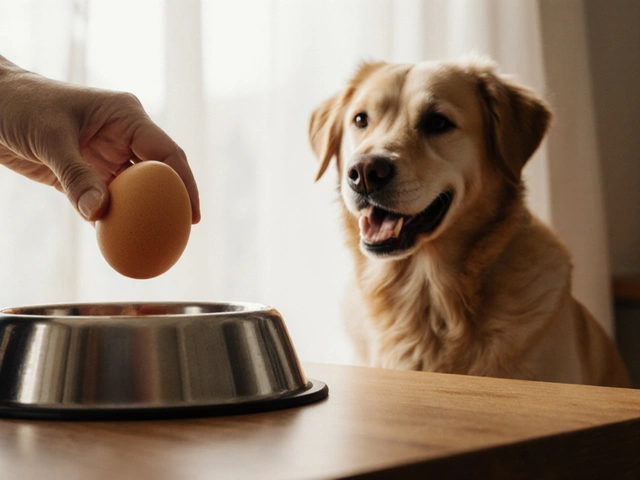Healthy Dog Diets: Simple Tips for a Happy Pup
Feeding your dog the right food feels like a big responsibility, but it doesn’t have to be confusing. With a few clear rules you can keep your furry friend fit, energetic, and free from food‑related problems.
What Makes a Dog Diet Healthy?
A healthy dog diet is balanced, meaning it includes protein, fat, carbs, vitamins, and minerals in the right amounts. High‑quality protein from meat, fish, or eggs builds muscle and supports immune function. Healthy fats—think fish oil or chicken fat—give a shiny coat and brain power. Carbohydrates from sweet potatoes, rice, or oatmeal provide steady energy without spiking blood sugar.
Look for a complete and balanced statement on the label. This tells you the food meets standards set by the Association of American Feed Control Officials (AAFCO). If a product skips the statement, ask the brand why.
Watch out for fillers like excessive corn or wheat. They add cheap calories but little nutritional value. Some dogs tolerate them fine, but many show digestive upset or skin issues.
Practical Ways to Improve Your Dog's Meals
Start by checking the ingredient list. The first three items should be real meat or fish. If you see "by‑product meal" or "animal digest" near the top, consider a switch.
Mix a little fresh food into dry kibble for added moisture and variety. A spoonful of plain cooked chicken, steamed carrots, or a dab of canned pumpkin can boost taste and fiber.
Portion control matters. Overfeeding leads to obesity, which shortens a dog’s life. Use the feeding guide on the package as a starting point, then adjust based on your dog’s activity level and body condition.
Stay away from toxic foods. Grapes, raisins, onions, garlic, and chocolate can cause serious health issues. Even small amounts of macadamia nuts or Xylitol‑sweetened treats should be avoided.If your dog has special needs—like allergies, joint pain, or a sensitive stomach—look for limited‑ingredient or prescription formulas. Talk to your vet before making big changes.
Hydration is a hidden part of diet. Fresh water should be available at all times. Adding a splash of low‑sodium broth to dry food can encourage drinking, but avoid broth with onion or garlic powder.
Here’s a quick daily plan for an average adult dog: two meals a day, each consisting of 70% high‑protein kibble, 20% cooked veggies, and 10% healthy fat source. Adjust the ratios for puppies, senior dogs, or very active breeds.
Want more ideas? Check out our recent posts: "Blue Buffalo vs Purina: Which Dog Food Is Better?" for brand comparisons, and "Best Chews for Puppies: What Vets Actually Recommend in 2025" for safe treats that also support dental health.
Remember, the best diet is one you can stick to and that keeps your dog thriving. Make small, evidence‑based tweaks, watch how your dog feels, and you’ll see the benefits quickly.

What Dog Food Is Recommended by Vets? Expert Choices Explained
Ever stood in the pet food aisle, totally lost? This article sorts through the vet-recommended dog foods and explains what makes them stand out. Get the lowdown on what actually matters for your dog's health, backed by real veterinary know-how. We'll cover the brands and ingredients most vets trust, plus a few tips to help you decide what's best for your dog. Finally, you'll get some honest advice to take the stress out of feeding time.
read more



